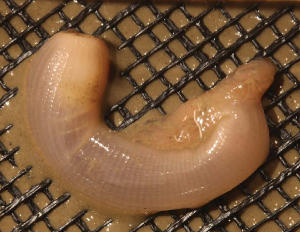Penis worms and jawless vertebrates
Two new ICAL papers are released, focussing on early vertebrates and the decay of marine organisms.

The first of these looks at the relationships of extinct jawless vertebrates. Lead author Emma Randle relates "these are really important to understanding the early evolution of vertebrates. Key to unravelling this formidable episode in our own evolutionary history is figuring out the evolutionary relationships of groups positioned towards the base of the vertebrate tree tree. Once this is achieved macroevolutionary patterns of diversity and evolutionary innovation can be understood. In our latest research we create a phylogeny for the Pteraspidiformes; a group of early vertebrates believed to be the earliest to posses bone. Problems concerning the morphological similarity of the group led us to explore the way we interpret shape variability of their skeletons, in the form of traditional discrete (e.g. absent/present) and quantitative characters (ratio data). We then used the trees obtained to explore their relationships in light of the fossils stratigraphical and palaeobiogeographical occurrences. We found that including quantitative data greatly improves the resolution of trees and that the Pteraspidiformes originated in the Canadian Arctic some 423 million years ago."
Another paper looks at slightly earlier fossils. Much of the early history of animals deals with completely soft bodied animals, and as such, their preservation and anatomy are difficult to interpret. A new paper published by Dr Robert Sansom shed some new light from an unusual direction. Documenting the changes that take place during the decay of modern priapulids (penis worms) the paper tests models of preservation of soft tissues in ancient Cambrian (~505 million year old) fossils. How organisms rot is an important part of the fossilisation process; in this case, priapulids are good representatives for the early condition of a major group of animals - the arthropods. Results indicate that details of internal anatomy are unlikely to be preserved with fidelity given current understanding of models of preservation. As such, this presents a challenge to recent findings of exceptionally reserved brains and bloods vessels in fossil arthropods. This paper is freely available at Scientific Reports.


